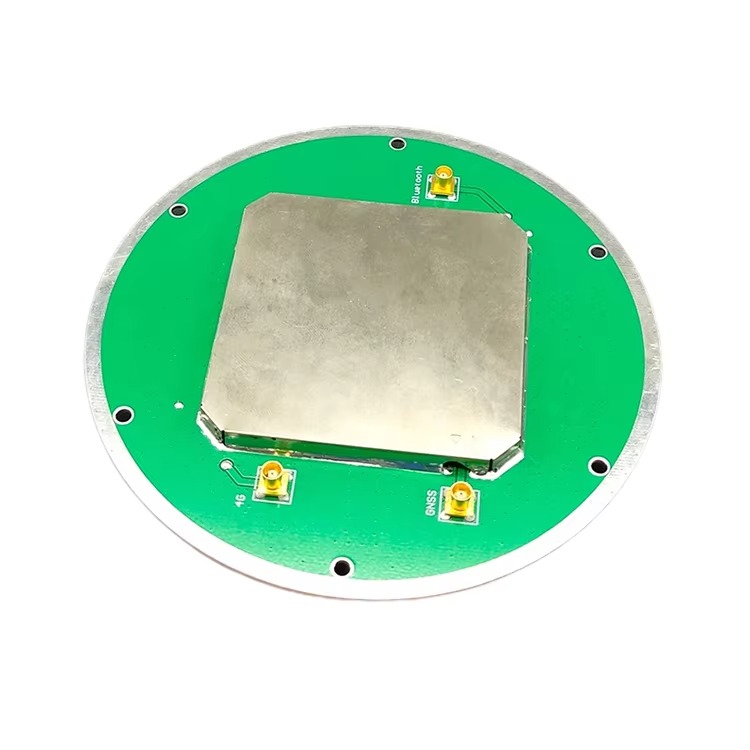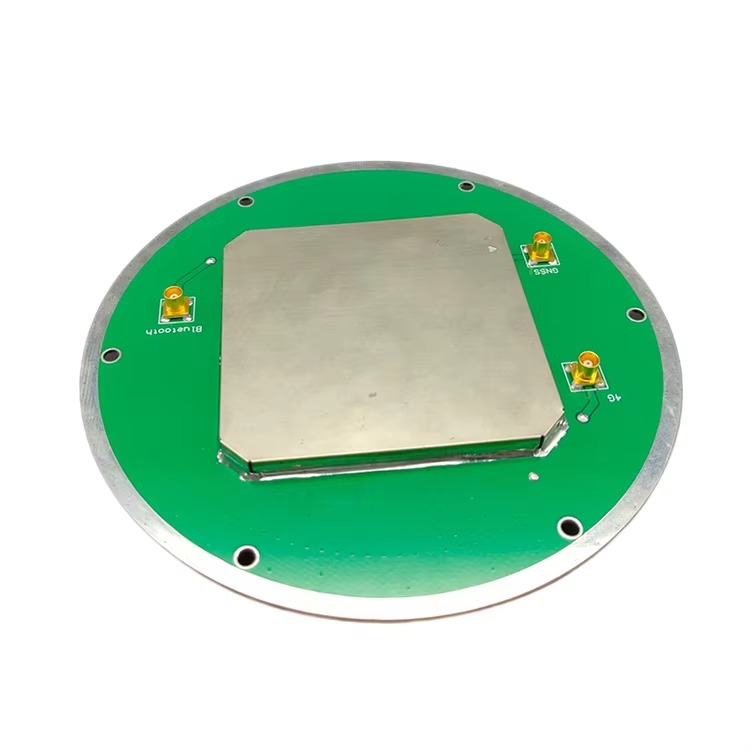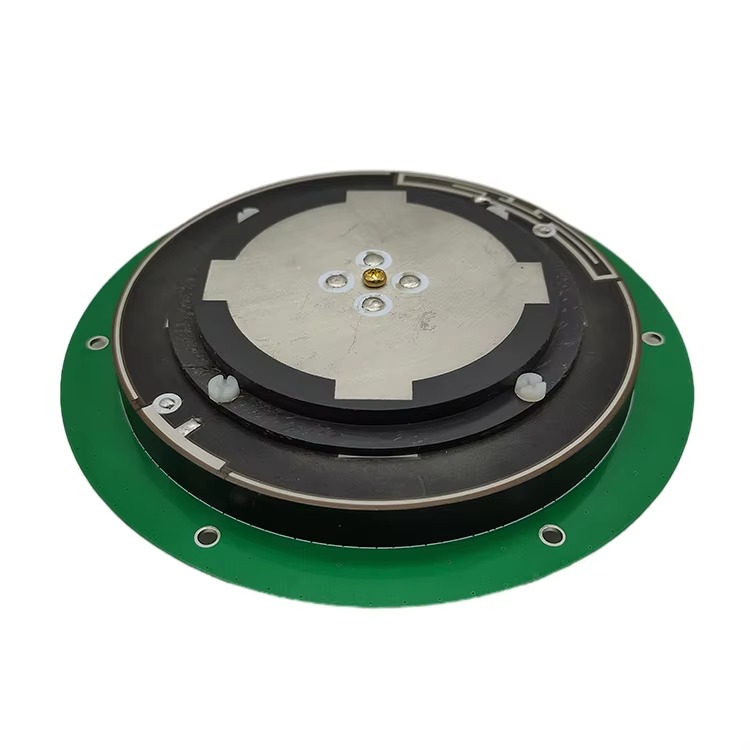Low - phase - noise CORS base station antennas have a wide range of applications across various industries, and their development is expected to continue evolving with emerging technologies and market demands.
5.1 Applications
5.1.1 Geodetic Surveying and Monitoring
Geodetic surveying and monitoring is one of the most important applications of low - phase - noise CORS base station antennas. In geodetic surveys, which aim to accurately measure the shape, size, and gravitational field of the Earth, millimeter - level precision is often required. Low - phase - noise antennas play a crucial role in achieving this level of precision.
For example, in the construction of large - scale infrastructure projects such as dams, bridges, and tunnels, geodetic surveys are conducted to monitor the deformation of the structures over time. By using a network of CORS base stations equipped with low - phase - noise antennas, surveyors can obtain highly accurate position data of the structure's key points. This data allows them to detect even the smallest deformations, such as those caused by structural loading or environmental factors like temperature changes and ground settlement. Early detection of such deformations is essential for ensuring the safety and integrity of the infrastructure.
In addition to structural monitoring, low - phase - noise CORS base station antennas are also used in crustal deformation monitoring. By deploying these antennas in a network across tectonically active regions, scientists can measure the movement of tectonic plates with high precision. This data helps in understanding the dynamics of earthquakes and volcanic activities, providing valuable information for earthquake prediction and risk assessment.
5.1.2 Precision Agriculture
Precision agriculture is another rapidly growing application area for low - phase - noise CORS base station antennas. In modern agriculture, the goal is to optimize crop yields while minimizing the use of resources such as water, fertilizers, and pesticides. Precision positioning technology, enabled by CORS systems with low - phase - noise antennas, is a key enabler of this goal.
For instance, in variable - rate application (VRA) systems, which adjust the amount of fertilizers, pesticides, or irrigation water applied to different parts of a field based on the specific needs of the crops, accurate positioning is essential. By equipping agricultural machinery such as tractors and sprayers with GNSS receivers that receive correction data from CORS base stations with low - phase - noise antennas, farmers can precisely navigate the machinery across the field. The low - phase - noise antennas ensure that the positioning accuracy is sufficient to apply the resources only where they are needed, reducing waste and improving the efficiency of agricultural operations.
Another application in precision agriculture is automated guided vehicles (AGVs) and autonomous tractors. These vehicles rely on accurate GNSS positioning to navigate through the field, perform tasks such as planting, harvesting, and weeding. Low - phase - noise CORS base station antennas provide the stable and accurate reference signals required for the AGVs to operate autonomously with high precision, reducing the need for human intervention and increasing the productivity of agricultural operations.
5.1.3 Autonomous Vehicles and Intelligent Transportation Systems (ITS)
The development of autonomous vehicles and intelligent transportation systems (ITS) is driving the demand for high - precision positioning technology, and low - phase - noise CORS base station antennas are an important component of this technology. Autonomous vehicles require real - time, centimeter - level positioning accuracy to navigate safely and efficiently in complex traffic environments.
CORS systems with low - phase - noise antennas can provide the necessary correction data to the autonomous vehicles' GNSS receivers, enabling them to achieve this level of accuracy. For example, in urban areas where GNSS signals are often affected by multipath interference from tall buildings, the low - phase - noise antennas' ability to reduce multipath and maintain phase stability is crucial. This ensures that the autonomous vehicles can accurately determine their position relative to other vehicles, pedestrians, and infrastructure elements such as traffic lights and road signs.
In ITS, low - phase - noise CORS base station antennas are also used for traffic management and monitoring. By providing accurate positioning data of vehicles on the road, traffic management centers can optimize traffic flow, reduce congestion, and improve road safety. For example, real - time traffic information can be collected and analyzed to adjust traffic signal timings or provide route guidance to drivers, based on the current traffic conditions.
5.1.4 Maritime and Aviation Navigation
Maritime and aviation navigation are critical application areas where reliable and accurate positioning is a matter of safety. Low - phase - noise CORS base station antennas are increasingly being used in these sectors to enhance the performance of GNSS - based navigation systems.
In maritime navigation, ships rely on GNSS for position determination, route planning, and collision avoidance. However, in coastal areas or busy shipping lanes, GNSS signals can be affected by multipath interference from the sea surface, land masses, and other ships. Low - phase - noise CORS base station antennas, deployed along the coast or on offshore platforms, can provide correction data to the ship's GNSS receivers. This correction data helps in reducing the phase noise and multipath - induced errors, ensuring that the ship's position is accurately determined. This is particularly important for ships navigating in narrow channels, ports, or areas with complex coastal geography.
In aviation navigation, low - phase - noise CORS base station antennas are used to support various applications such as precision approach and landing, en - route navigation, and airport surface movement guidance. For precision approach and landing, which requires extremely high positioning accuracy to ensure the safe landing of aircraft, CORS systems with low - phase - noise antennas provide the necessary reference signals. The low - phase - noise performance of the antennas ensures that the phase of the GNSS signals is stable, allowing the aircraft's navigation system to accurately calculate the aircraft's position relative to the runway. This helps in reducing the risk of accidents during landing, especially in adverse weather conditions.
5.2 Future Trends
5.2.1 Integration with 5G and Beyond
The integration of low - phase - noise CORS base station antennas with 5G and future generations of wireless communication technology (5G - Advanced and 6G) is expected to be a major trend. 5G and beyond offer high data rates, low latency, and large - scale connectivity, which can significantly enhance the performance of CORS systems.
By integrating CORS with 5G, the transmission of correction data from the base stations to the rover stations can be accelerated, reducing the latency in data delivery. This is particularly important for real - time applications such as autonomous driving and precision agriculture, where low latency is critical. Additionally, 5G's large - scale connectivity allows for the deployment of a more dense network of CORS base stations, improving the coverage and positioning accuracy in urban, rural, and remote areas.
Furthermore, 5G - Advanced and 6G technologies are expected to support new positioning technologies such as ultra - wideband (UWB) and visible light communication (VLC), which can be integrated with GNSS and CORS systems. The combination of these technologies, along with low - phase - noise antennas, can further improve the positioning accuracy and reliability, enabling new applications such as indoor positioning in large buildings, underground mines, and other environments where GNSS signals are weak or unavailable.
5.2.2 Miniaturization and Low - Power Design
The trend towards miniaturization and low - power design of low - phase - noise CORS base station antennas is expected to continue. As the demand for CORS systems grows in applications such as portable surveying equipment, unmanned aerial vehicles (UAVs), and Internet of Things (IoT) devices, there is a need for smaller and more energy - efficient antennas.
Miniaturization of the antenna can be achieved through the use of advanced materials and design techniques. For example, the development of microelectromechanical systems (MEMS) technology allows for the fabrication of tiny antenna components with high precision. These MEMS - based antennas can be integrated into small - form - factor devices without sacrificing performance. Additionally, the use of metamaterials, which have unique electromagnetic properties not found in natural materials, can enable the design of compact antennas with excellent phase - noise performance.
Low - power design is also crucial for battery - powered devices such as portable surveying tools and IoT sensors. By optimizing the antenna's design and using low - power components such as energy - efficient LNAs, the power consumption of the CORS base station antenna can be reduced. This extends the battery life of the devices, making them more suitable for long - term field operations.
5.2.3 Artificial Intelligence (AI) and Machine Learning (ML) Integration
The integration of artificial intelligence (AI) and machine learning (ML) technologies into the design, optimization, and operation of low - phase - noise CORS base station antennas is an emerging trend with great potential. AI and ML can be used to address various challenges in the field, from antenna design to signal processing and performance monitoring.
In antenna design, AI - based algorithms can be used to optimize the antenna's structure and parameters for low - phase - noise performance. For example, using generative design algorithms, AI can generate multiple antenna design concepts based on the desired performance specifications, such as phase noise level, gain, and frequency range. These designs can then be evaluated and refined using ML models that predict the antenna's performance, reducing the time and cost associated with traditional trial - and - error design methods.
In signal processing, ML algorithms can be used to further reduce phase noise and improve signal integrity. For instance, ML models can be trained to recognize and filter out complex multipath signals that are difficult to suppress using traditional choke ring designs. By analyzing large amounts of historical signal data, these models can learn the characteristics of multipath signals and adaptively adjust the signal processing parameters to minimize their impact on phase noise.
In the operation and maintenance of CORS systems, AI and ML can be used for real - time performance monitoring and fault diagnosis. By continuously collecting and analyzing data from the antenna, such as phase noise measurements, signal strength, and environmental conditions, AI models can detect anomalies in the antenna's performance. This allows for early identification of potential faults, such as component degradation or environmental interference, enabling proactive maintenance and reducing system downtime.
5.2.4 Expansion of Global CORS Networks
The expansion of global CORS networks is another important future trend. Currently, many countries and regions have established their own CORS networks, but there is a growing need for a unified global CORS network to support international applications such as global navigation, disaster response, and climate change monitoring.
A global CORS network, equipped with low - phase - noise antennas, would provide consistent and high - precision positioning services across the world. This would be particularly beneficial for applications such as international air travel and maritime shipping, where ships and aircraft need to navigate across multiple regions with different CORS systems. By standardizing the data formats, communication protocols, and performance specifications of the CORS base stations, a global network can ensure seamless interoperability between different regional networks.
The expansion of global CORS networks also requires increased international collaboration. Countries and international organizations need to work together to share resources, expertise, and data to build and maintain the network. Additionally, advancements in satellite communication technology will play a crucial role in enabling the global transmission of CORS data, ensuring that even remote areas have access to the network's services.
Conclusion
Low - phase - noise CORS base station antennas are a critical component of modern GNSS - based positioning systems, playing a vital role in enhancing the accuracy, reliability, and performance of various applications across industries. This paper has provided a comprehensive overview of these antennas, covering their design and construction, working principles, advantages and challenges, applications, and future trends.
In terms of design and construction, the adoption of advanced structural designs such as multi - feed point and 3D choke ring structures, along with the careful selection of high - conductivity conductive materials and low - loss dielectric materials, has been instrumental in achieving low - phase - noise performance. Precision machining and comprehensive calibration processes further ensure that the antennas meet the strict performance requirements for phase stability.
The working principles of low - phase - noise CORS base station antennas revolve around efficient signal reception, precise phase control, and effective interaction with GNSS satellite signals. By minimizing phase center offset, using high - quality LNAs, and reducing multipath interference, these antennas ensure that the received GNSS signals have low phase noise, providing a stable foundation for accurate positioning.
The advantages of low - phase - noise CORS base station antennas are evident in their ability to enhance positioning accuracy, improve signal integrity, and support compatibility with multiple GNSS constellations. These advantages have enabled their widespread application in geodetic surveying and monitoring, precision agriculture, autonomous vehicles and ITS, and maritime and aviation navigation, among other fields.
However, the development and deployment of these antennas also face challenges, including high design and manufacturing costs, sensitivity to environmental factors, and integration issues with existing CORS infrastructure. Addressing these challenges will be crucial for the further adoption and advancement of low - phase - noise CORS base station antennas.
Looking to the future, the integration of these antennas with 5G and beyond, the trend towards miniaturization and low - power design, the integration of AI and ML technologies, and the expansion of global CORS networks are expected to drive significant advancements in the field. These developments will not only further improve the performance of low - phase - noise CORS base station antennas but also open up new application opportunities, contributing to the continued growth and innovation of the GNSS ecosystem.
In conclusion, low - phase - noise CORS base station antennas are essential for meeting the increasing demand for high - precision positioning in various industries. As technology continues to evolve, these antennas will play an even more important role in shaping the future of navigation, surveying, and other location - based services, enabling a more efficient, safe, and sustainable world.




































































 Language
Language
 En
En Cn
Cn Korean
Korean

 Home >
Home > 







 18665803017 (Macro)
18665803017 (Macro)













